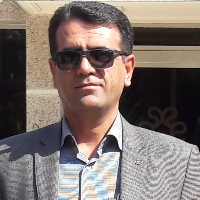Analysis of barriers to industrialization of animal husbandry: The case of Ghaleh-Ganj County of Kerman Province
With regard to increasing population growth، the demand for food products، including livestock production also increases. Thus، it is really important to pay enough attention to livestock production system in the process of food security of the country. Livestock and livestock products provide direct cash income. Some agricultural researchers believe that livestock are alive agricultural banks. Furthermore، livestock is a source of protein and manure which are useful in human nutrition and soil fertility respectively. Thus، livestock industrialization can be considered as a solution to overcoming rural development problems especially food security problems. Accordingly، the main question of this study was: what are the barriers of industrialization of animal husbandry in Ghaleh Ganj County of Kerman Province?
A survey research method was used in this study. A researcher constructed questionnaire was developed and utilized to collect data. Furthermore، face validity procedure was used to ensure the validity of the supposed questionnaire and its reliability was also verified calculating Cronbach''s Alpha reliability coefficient (from 0. 532 to 0. 733) based on the data collected in a pilot study. This research was conducted in Ghaleh Ganj County of Kerman Province. This County consists of five districts. Three districts were selected randomly. 810 livestock breeders lived in these districts. About 266 ones of them were selected and studied based on Kerjcie and Morgan Sampling Table and stratified sampling procedure. Different statistical analyses such as frequency، mean score، standard deviation، coefficient of variation، cluster analysis and paired t-test were used to analyze data.
The findings of this study showed that there are different barriers in the process of animal husbandry industrialization i. e.: Economic barriers: high feed prices، low financial abilities of the breeders، high purchasing costs of equipment Structural barriers: lack of land ownership documents، land transfer problems، lack of high yield adopted races Education- extension barriers: low competency extension officers، lack of access to research centers associated with livestockSocio- cultural barriers: low risk-taking spirit، multi job attribute of people and aged structure of themOrganizational barriers: Lack of attention to the livestock sector in the country''s macroeconomic policies، lack of support from Jihad-e-Agriculture Organization especially in the early stages of production، and the cumbersome administrative regulationsGeographical barriers: mismatch of the used material with local conditions and construction of livestock units close to the villageIndividual barriers: dependency to state supports، low technical knowledge of the breeders and unwillingness of them for continuous relationships with each other Moreover، the comparative analysis of the above barriers showed that organizational، structural، economic، socio-cultural، individual، geographical and education- extension barriers ranked from first to seventh respectively.
The results of this study showed that organizational and structural barriers are the most important inhibitors of livestock industrialization. Moreover، livestock industrialization barriers have a high level in the study area. Thus، more attention should be paid to this issue.
- حق عضویت دریافتی صرف حمایت از نشریات عضو و نگهداری، تکمیل و توسعه مگیران میشود.
- پرداخت حق اشتراک و دانلود مقالات اجازه بازنشر آن در سایر رسانههای چاپی و دیجیتال را به کاربر نمیدهد.


